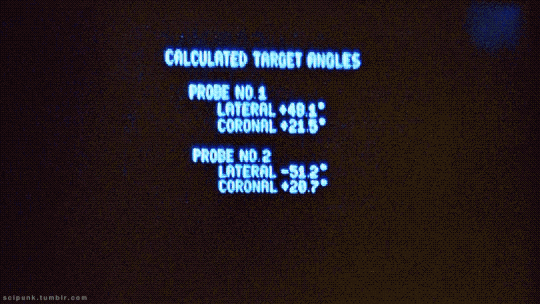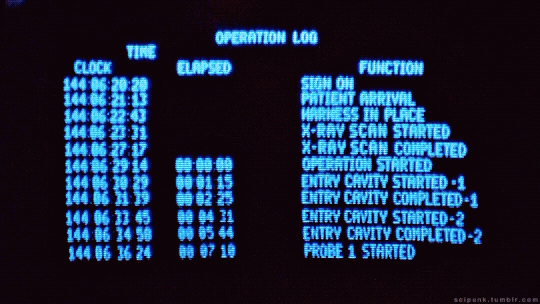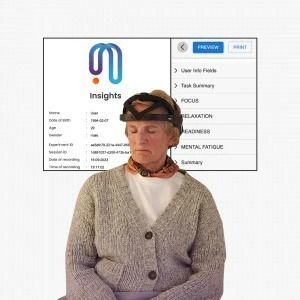#Brain-Computer-Interface
Explore tagged Tumblr posts
Text
DAILY DOSE: Neuralink approved for clinical study testing brain-computer interface; Scientist embarks on finding solutions to death.
NEURALINK APPROVED FOR CLINICAL STUDY WITH ROBOTIC ARM Neuralink has received approval for a new clinical study, CONVOY, to test its brain-computer interface chip with a robotic arm. The study will allow patients from its PRIME safety trial, who are severely paralyzed due to cervical spinal cord injuries or ALS, to participate. This marks a significant step toward restoring both digital and…
1 note
·
View note
Text
Brain-Computer Interfaces: Connecting the Brain Directly to Computers for Communication and Control
In recent years, technological advancements have ushered in the development of Brain-Computer Interfaces (BCIs)—an innovation that directly connects the brain to external devices, enabling communication and control without the need for physical movements. BCIs have the potential to revolutionize various fields, from healthcare to entertainment, offering new ways to interact with machines and augment human capabilities.
YCCINDIA, a leader in digital solutions and technological innovations, is exploring how this cutting-edge technology can reshape industries and improve quality of life. This article delves into the fundamentals of brain-computer interfaces, their applications, challenges, and the pivotal role YCCINDIA plays in this transformative field.
What is a Brain-Computer Interface?
A Brain-Computer Interface (BCI) is a technology that establishes a direct communication pathway between the brain and an external device, such as a computer, prosthetic limb, or robotic system. BCIs rely on monitoring brain activity, typically through non-invasive techniques like electroencephalography (EEG) or more invasive methods such as intracranial electrodes, to interpret neural signals and translate them into commands.
The core idea is to bypass the normal motor outputs of the body—such as speaking or moving—and allow direct control of devices through thoughts alone. This offers significant advantages for individuals with disabilities, neurological disorders, or those seeking to enhance their cognitive or physical capabilities.
How Do Brain-Computer Interfaces Work?
The process of a BCI can be broken down into three key steps:
Signal Acquisition: Sensors, either placed on the scalp or implanted directly into the brain, capture brain signals. These signals are electrical impulses generated by neurons, typically recorded using EEG for non-invasive BCIs or implanted electrodes for invasive systems.
Signal Processing: Once the brain signals are captured, they are processed and analyzed by software algorithms. The system decodes these neural signals to interpret the user's intentions. Machine learning algorithms play a crucial role here, as they help refine the accuracy of signal decoding.
Output Execution: The decoded signals are then used to perform actions, such as moving a cursor on a screen, controlling a robotic arm, or even communicating via text-to-speech. This process is typically done in real-time, allowing users to interact seamlessly with their environment.
Applications of Brain-Computer Interfaces
The potential applications of BCIs are vast and span across multiple domains, each with the ability to transform how we interact with the world. Here are some key areas where BCIs are making a significant impact:

1. Healthcare and Rehabilitation
BCIs are most prominently being explored in the healthcare sector, particularly in aiding individuals with severe physical disabilities. For people suffering from conditions like amyotrophic lateral sclerosis (ALS), spinal cord injuries, or locked-in syndrome, BCIs offer a means of communication and control, bypassing damaged nerves and muscles.
Neuroprosthetics and Mobility
One of the most exciting applications is in neuroprosthetics, where BCIs can control artificial limbs. By reading the brain’s intentions, these interfaces can allow amputees or paralyzed individuals to regain mobility and perform everyday tasks, such as grabbing objects or walking with robotic exoskeletons.
2. Communication for Non-Verbal Patients
For patients who cannot speak or move, BCIs offer a new avenue for communication. Through brain signal interpretation, users can compose messages, navigate computers, and interact with others. This technology holds the potential to enhance the quality of life for individuals with neurological disorders.
3. Gaming and Entertainment
The entertainment industry is also beginning to embrace BCIs. In the realm of gaming, brain-controlled devices can open up new immersive experiences where players control characters or navigate environments with their thoughts alone. This not only makes games more interactive but also paves the way for greater accessibility for individuals with physical disabilities.
4. Mental Health and Cognitive Enhancement
BCIs are being explored for their ability to monitor and regulate brain activity, offering potential applications in mental health treatments. For example, neurofeedback BCIs allow users to observe their brain activity and modify it in real time, helping with conditions such as anxiety, depression, or ADHD.
Moreover, cognitive enhancement BCIs could be developed to boost memory, attention, or learning abilities, providing potential benefits in educational settings or high-performance work environments.
5. Smart Home and Assistive Technologies
BCIs can be integrated into smart home systems, allowing users to control lighting, temperature, and even security systems with their minds. For people with mobility impairments, this offers a hands-free, effortless way to manage their living spaces.
Challenges in Brain-Computer Interface Development
Despite the immense promise, BCIs still face several challenges that need to be addressed for widespread adoption and efficacy.

1. Signal Accuracy and Noise Reduction
BCIs rely on detecting tiny electrical signals from the brain, but these signals can be obscured by noise—such as muscle activity, external electromagnetic fields, or hardware limitations. Enhancing the accuracy and reducing the noise in these signals is a major challenge for researchers.
2. Invasive vs. Non-Invasive Methods
While non-invasive BCIs are safer and more convenient, they offer lower precision and control compared to invasive methods. On the other hand, invasive BCIs, which involve surgical implantation of electrodes, pose risks such as infection and neural damage. Finding a balance between precision and safety remains a significant hurdle.
3. Ethical and Privacy Concerns
As BCIs gain more capabilities, ethical issues arise regarding the privacy and security of brain data. Who owns the data generated by a person's brain, and how can it be protected from misuse? These questions need to be addressed as BCI technology advances.
4. Affordability and Accessibility
Currently, BCI systems, especially invasive ones, are expensive and largely restricted to research environments or clinical trials. Scaling this technology to be affordable and accessible to a wider audience is critical to realizing its full potential.
YCCINDIA’s Role in Advancing Brain-Computer Interfaces
YCCINDIA, as a forward-thinking digital solutions provider, is dedicated to supporting the development and implementation of advanced technologies like BCIs. By combining its expertise in software development, data analytics, and AI-driven solutions, YCCINDIA is uniquely positioned to contribute to the growing BCI ecosystem in several ways:
1. AI-Powered Signal Processing
YCCINDIA’s expertise in AI and machine learning enables more efficient signal processing for BCIs. The use of advanced algorithms can enhance the decoding of brain signals, improving the accuracy and responsiveness of BCIs.
2. Healthcare Solutions Integration
With a focus on digital healthcare solutions, YCCINDIA can integrate BCIs into existing healthcare frameworks, enabling hospitals and rehabilitation centers to adopt these innovations seamlessly. This could involve developing patient-friendly interfaces or working on scalable solutions for neuroprosthetics and communication devices.
3. Research and Development
YCCINDIA actively invests in R&D efforts, collaborating with academic institutions and healthcare organizations to explore the future of BCIs. By driving research in areas such as cognitive enhancement and assistive technology, YCCINDIA plays a key role in advancing the technology to benefit society.
4. Ethical and Privacy Solutions
With data privacy and ethics being paramount in BCI applications, YCCINDIA’s commitment to developing secure systems ensures that users’ neural data is protected. By employing encryption and secure data-handling protocols, YCCINDIA mitigates concerns about brain data privacy and security.
The Future of Brain-Computer Interfaces
As BCIs continue to evolve, the future promises even greater possibilities. Enhanced cognitive functions, fully integrated smart environments, and real-time control of robotic devices are just the beginning. BCIs could eventually allow direct communication between individuals, bypassing the need for speech or text, and could lead to innovations in education, therapy, and creative expression.
The collaboration between tech innovators like YCCINDIA and the scientific community will be pivotal in shaping the future of BCIs. By combining advanced AI, machine learning, and ethical considerations, YCCINDIA is leading the charge in making BCIs a reality for a wide range of applications, from healthcare to everyday life.
Brain-Computer Interfaces represent the next frontier in human-computer interaction, offering profound implications for how we communicate, control devices, and enhance our abilities. With applications ranging from healthcare to entertainment, BCIs are poised to transform industries and improve lives. YCCINDIA’s commitment to innovation, security, and accessibility positions it as a key player in advancing this revolutionary technology.
As BCI technology continues to develop, YCCINDIA is helping to shape a future where the boundaries between the human brain and technology blur, opening up new possibilities for communication, control, and human enhancement.
Brain-computer interfaces: Connecting the brain directly to computers for communication and control
Web Designing Company
Web Designer in India
Web Design
#BrainComputerInterface #BCITechnology #Neurotech #NeuralInterfaces #MindControl
#CognitiveTech #Neuroscience #FutureOfTech #HumanAugmentation #BrainTech
#Brain-Computer-Interface#BCI-Technology#Neuro-tech#Neural-Interfaces#Mind-Control#Cognitive-Tech#Neuro-science#Future-Of-Tech#Human-Augmentation#Brain-Tech
0 notes
Text
why neuroscience is cool
space & the brain are like the two final frontiers
we know just enough to know we know nothing
there are radically new theories all. the. time. and even just in my research assistant work i've been able to meet with, talk to, and work with the people making them
it's such a philosophical science
potential to do a lot of good in fighting neurological diseases
things like BCI (brain computer interface) and OI (organoid intelligence) are soooooo new and anyone's game - motivation to study hard and be successful so i can take back my field from elon musk
machine learning is going to rapidly increase neuroscience progress i promise you. we get so caught up in AI stealing jobs but yes please steal my job of manually analyzing fMRI scans please i would much prefer to work on the science PLUS computational simulations will soon >>> animal testing to make all drug testing safer and more ethical !! we love ethical AI <3
collab with...everyone under the sun - psychologists, philosophers, ethicists, physicists, molecular biologists, chemists, drug development, machine learning, traditional computing, business, history, education, literally try to name a field we don't work with
it's the brain eeeeee
#my motivation to study so i can be a cool neuroscientist#science#women in stem#academia#stem#stemblr#studyblr#neuroscience#stem romanticism#brain#psychology#machine learning#AI#brain computer interface#organoid intelligence#motivation#positivity#science positivity#cogsci#cognitive science
2K notes
·
View notes
Text



Love, Death & Robots - S1E1 - Sonnie's Edge (2019)
#love death and robots#ldar#scifi#3d animation#futuristic fashion#futurism#dystopian#cyberpunk aesthetic#cyberpunk art#cyberpunk#sci fi#science fiction#neon colors#neon aesthetic#neon noir#brain computer interface#neurotechnology#neuralink#gifs#gifset
411 notes
·
View notes
Text
Perhaps controversial, but: why the hell do people wanna download fics as EPUBs? I'd vastly rather they be PDFs
#which is funny b/c i grew up with a kindle so I have a lot of experience with the 'page flipping' format epub uses#...OTOH part of it may be the fact epubs AREN'T exactly formatted like the kindle and my brain wigs out about it?#b/c yeah i just hate the two-screen form epub uses; i'd rather just have the infinite scroll a pdf provides#if/when i still used my kindle and downloaded fic to it that was a different story; but on phone or computer? pdf 4 life#this is me#the monkey speaks#discourse and discussion (user interface)#discourse and discussion (fanfiction)
21 notes
·
View notes
Text

41 notes
·
View notes
Note
15 for the ultra-processed disability ask thing!
Ok for reference that's
What’s something your disability has stopped you from learning or doing?
Fun story!
For my Ph.D. I studied brain computer interfaces. Specifically P300 brain computer interfaces. Here's my dissertation, for reference.
As far as I can tell, most people studying brain computer interfaces will ever use them. It might not be for their own communication needs (I'm a a part-time AAC user but I do just fine using my hands to access my AAC; I don't need a brain computer interface.) But if you work in a lab with brain computer interfaces, you're probably going to get called on to test that, like, new settings do what they say they do / that it's still possible to make selections / that the data collection method actually collects the data by using the interface. Plus we get tapped to be "neurotypical controls" (what my papers say) and/or "healthy controls" (what a lot of other people's papers say; I've also seen people alternate between the two) on a semi-regular basis, if we're close enough on whatever other demographics they're matching on to be reasonable.
I'm obviously not a neurotypical control. But I also cannot use a P300 brain computer interface, because that's basically dependent on flashing lights a bunch of times per second. So I got a Ph.D. studying a kind of brain computer interface that I cannot use.
(There are other kinds, some of which I can use. One particularly desperate masters student working with motor imagery brain computer interfaces tried to change his thesis wording to "controls without Parkinson's" so he could use me as a control. Pretty sure his supervisors made him take me back out though; his final thesis says both neurotypical control and healthy control.)
5 notes
·
View notes
Text

Ever heard of hidden technology like predictive AI or micro-drones? This fascinating video on YouTube uncovers the secret tech innovations of the last few years—and a surprising twist! Watch now on YT.
#hidden technology#tech secrets#future technology#AI advancements#micro drones#brain computer interface
2 notes
·
View notes
Text
Its the year 2050. I think about making a grilled cheese but my neuralink causes 14 ads to start playing over the recipe.
9 notes
·
View notes
Text
DAILY DOSE: Harvard Students Expose Privacy Risks of Face Recognition; Brain-Computer-Interface Trial Shows Promise for Paralysis Patients.
HARVARD STUDENTS SHOW DANGERS OF FACIAL RECOGNITION TECHNOLOGY Two Harvard students, AnhPhu Nguyen and Caine Ardayfio, demonstrated how combining Meta’s smart glasses with face image search technology could potentially expose personal details about individuals merely by looking at them. Their project, named I-XRAY, utilizes the Meta Ray Bans 2 and an invasive face search engine called PimEyes,…
#Africa#agriculture#Asia#astronomy#Australia#brain-computer-interface#climate change#drug development#drug discovery#ecology#environment#Europe#facial recognition#Featured#food#microbiome#natural disaster#North America#politics#South America#space exploration#technology#Wildfires
1 note
·
View note
Text
dads been getting back into making music in a big way and its so funny to have lots of back and forth about cool experimental stuff we've come across and i ask how his own tinkering is going and he tells me he's spent the last 2 days perfecting the setup on his RGB keyboard instead
#terminal computer guy brain#he couldn't get his new pedalboard to interface wiht linux at all so he bought a new windows gaming laptop to run the softwar#i convinced him to play no mans skya few months back and he got really into the soundtrack and hes like#i cant get a whole synth setup i just got this new guitar last year but also i need one.#very fun for me who has zero musical ability beyond a good vocal range.
11 notes
·
View notes
Text
Keep Brain Interfaces Open
#elon musk#dont trust elon#transhumanism#brain computer interface#neurotechnology#cybernetics#cyberpunk
8 notes
·
View notes
Text






The Terminal Man (1974)
#the terminal man#70s#vaporwave#scifi#gifs#gifset#scifi movies#synthwave#user interface#user interaction#uxdesign#1970s#70s sci fi#electronics#computers#brain implant
91 notes
·
View notes
Text
I wanted to make a cleaner summary of last week's classes and also review the classes I have this week since the material is already uploaded beforehand but I was feeling so horrible throughout the day that when I sat down I was just gonna look at the ones for tomorrow but I think I'm just gonna go to bed because I just gave my little numbers game a few tries and not even the joy of tribial elementary school-level math games is bringing my brain cells and/or full sentience back
#diary#accessing it through the CMD thing and not just running it from the IDE made me realize a few things about it though so I'll hav#I'll have to maybe jot them down somewhere when I'd normally just be rly excited and try to fix them straight away like I am truly fucked r#I do wanna make an eng version of it sometime soon so I can share it even tho it's literally the simplest little thing. it's fun if you're#an easily amused nerd that loves playing with numbers in a truly useless manner. if that makes sense#also very obviously text-only I am NOT torturing myself with any graphics of ANY kind rn#it closes immediatly as they do and also when it comes to having double/triple digit starting numbers it becomes a lot less fun I think tho#though I haven't used it much with those yet#I still wanna figure out a way of making it better when it comes to 2/3 digit starters. and my original idea included maybe keeping track#keeping track of how many steps you took even between different rounds but I made the simplest version for now. I also think making like a#''this was the least amount of steps possible!'' type thing would be very very cool but that is FAR too big brained for me rn#cause I can figure out how to do the record keeping thing but that last one is like. let's stop talking for a little while.................#oh but adding an actual interface sounds so fun even though I have very little clue on how to do that rn I could probably STOP typing becau#because I can feel my stupid ass self start getting excited about this which will make it so I start working on it instead of going to bed#NO. DOWN !!!!!!!!!!!!!! auhgh............ oh man I had a lame joke to make but I completely forgot what it was#I have coding class tomorrow in which I normally just do the exercises as fast as possible before playing around but the only Python editor#I could find installed on the school computers was Visual Studio Code and I have no clue how to use that shit like I don't need so many#so many buttons. probz. OKAY GOODNIGHT
3 notes
·
View notes
Text

Discover the future with Neuphony& BCI technology. Explore brain computer interfaces, mind-controlled technology, EEG Headsets & more
2 notes
·
View notes
Text
The Way the Brain Learns is Different from the Way that Artificial Intelligence Systems Learn - Technology Org
New Post has been published on https://thedigitalinsider.com/the-way-the-brain-learns-is-different-from-the-way-that-artificial-intelligence-systems-learn-technology-org/
The Way the Brain Learns is Different from the Way that Artificial Intelligence Systems Learn - Technology Org
Researchers from the MRC Brain Network Dynamics Unit and Oxford University’s Department of Computer Science have set out a new principle to explain how the brain adjusts connections between neurons during learning.
This new insight may guide further research on learning in brain networks and may inspire faster and more robust learning algorithms in artificial intelligence.
Study shows that the way the brain learns is different from the way that artificial intelligence systems learn. Image credit: Pixabay
The essence of learning is to pinpoint which components in the information-processing pipeline are responsible for an error in output. In artificial intelligence, this is achieved by backpropagation: adjusting a model’s parameters to reduce the error in the output. Many researchers believe that the brain employs a similar learning principle.
However, the biological brain is superior to current machine learning systems. For example, we can learn new information by just seeing it once, while artificial systems need to be trained hundreds of times with the same pieces of information to learn them.
Furthermore, we can learn new information while maintaining the knowledge we already have, while learning new information in artificial neural networks often interferes with existing knowledge and degrades it rapidly.
These observations motivated the researchers to identify the fundamental principle employed by the brain during learning. They looked at some existing sets of mathematical equations describing changes in the behaviour of neurons and in the synaptic connections between them.
They analysed and simulated these information-processing models and found that they employ a fundamentally different learning principle from that used by artificial neural networks.
In artificial neural networks, an external algorithm tries to modify synaptic connections in order to reduce error, whereas the researchers propose that the human brain first settles the activity of neurons into an optimal balanced configuration before adjusting synaptic connections.
The researchers posit that this is in fact an efficient feature of the way that human brains learn. This is because it reduces interference by preserving existing knowledge, which in turn speeds up learning.
Writing in Nature Neuroscience, the researchers describe this new learning principle, which they have termed ‘prospective configuration’. They demonstrated in computer simulations that models employing this prospective configuration can learn faster and more effectively than artificial neural networks in tasks that are typically faced by animals and humans in nature.
The authors use the real-life example of a bear fishing for salmon. The bear can see the river and it has learnt that if it can also hear the river and smell the salmon it is likely to catch one. But one day, the bear arrives at the river with a damaged ear, so it can’t hear it.
In an artificial neural network information processing model, this lack of hearing would also result in a lack of smell (because while learning there is no sound, backpropagation would change multiple connections including those between neurons encoding the river and the salmon) and the bear would conclude that there is no salmon, and go hungry.
But in the animal brain, the lack of sound does not interfere with the knowledge that there is still the smell of the salmon, therefore the salmon is still likely to be there for catching.
The researchers developed a mathematical theory showing that letting neurons settle into a prospective configuration reduces interference between information during learning. They demonstrated that prospective configuration explains neural activity and behaviour in multiple learning experiments better than artificial neural networks.
Lead researcher Professor Rafal Bogacz of MRC Brain Network Dynamics Unit and Oxford’s Nuffield Department of Clinical Neurosciences says: ‘There is currently a big gap between abstract models performing prospective configuration, and our detailed knowledge of anatomy of brain networks. Future research by our group aims to bridge the gap between abstract models and real brains, and understand how the algorithm of prospective configuration is implemented in anatomically identified cortical networks.’
The first author of the study Dr Yuhang Song adds: ‘In the case of machine learning, the simulation of prospective configuration on existing computers is slow, because they operate in fundamentally different ways from the biological brain. A new type of computer or dedicated brain-inspired hardware needs to be developed, that will be able to implement prospective configuration rapidly and with little energy use.’
Source: University of Oxford
You can offer your link to a page which is relevant to the topic of this post.
#A.I. & Neural Networks news#algorithm#Algorithms#Anatomy#Animals#artificial#Artificial Intelligence#artificial intelligence (AI)#artificial neural networks#Brain#Brain Connectivity#brain networks#Brain-computer interfaces#brains#bridge#change#computer#Computer Science#computers#dynamics#ear#employed#energy#fishing#Fundamental#Future#gap#Hardware#hearing#how
2 notes
·
View notes